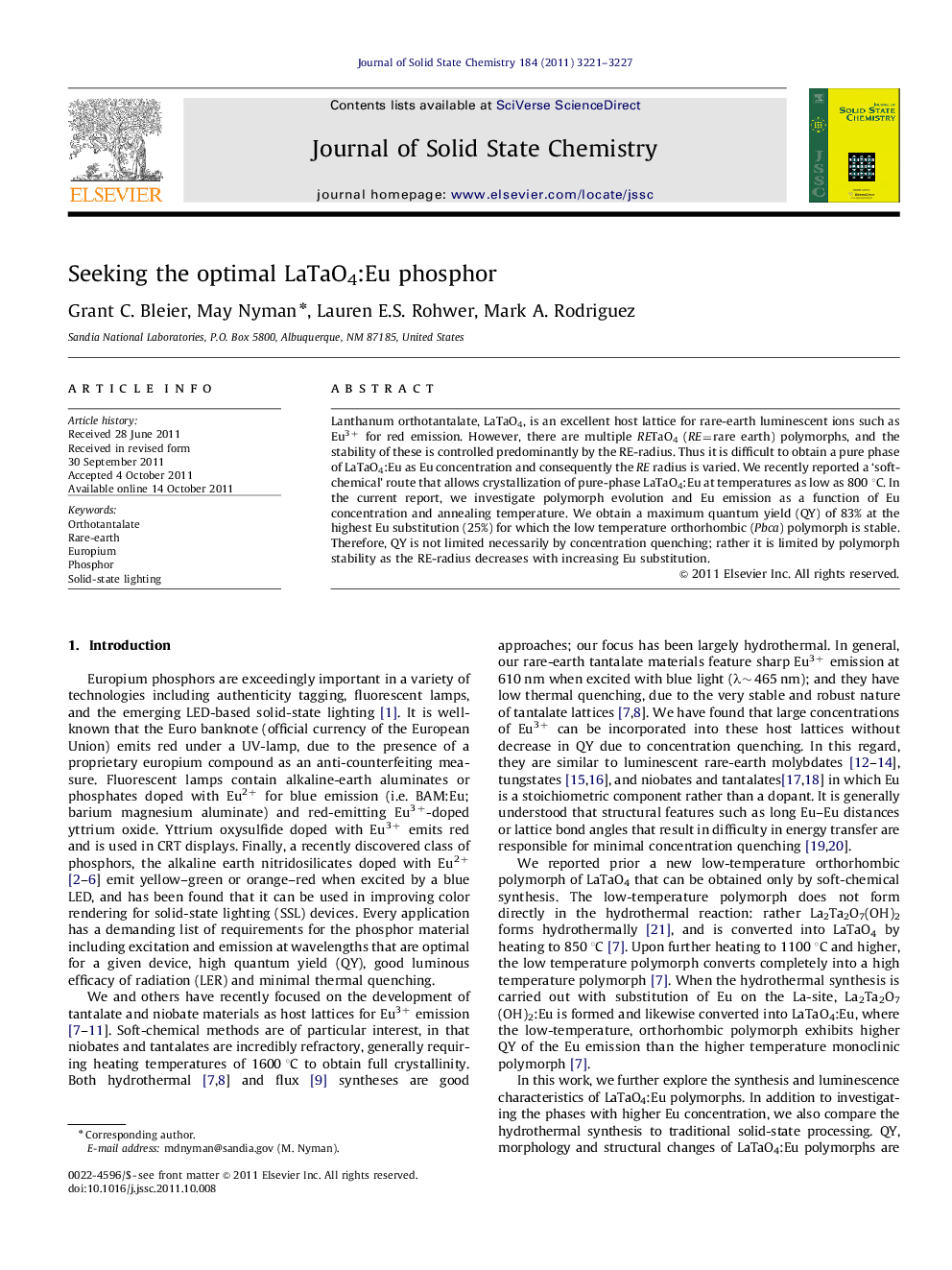| Article ID | Journal | Published Year | Pages | File Type |
|---|---|---|---|---|
| 1330529 | Journal of Solid State Chemistry | 2011 | 7 Pages |
Lanthanum orthotantalate, LaTaO4, is an excellent host lattice for rare-earth luminescent ions such as Eu3+ for red emission. However, there are multiple RETaO4 (RE=rare earth) polymorphs, and the stability of these is controlled predominantly by the RE-radius. Thus it is difficult to obtain a pure phase of LaTaO4:Eu as Eu concentration and consequently the RE radius is varied. We recently reported a ‘soft-chemical’ route that allows crystallization of pure-phase LaTaO4:Eu at temperatures as low as 800 °C. In the current report, we investigate polymorph evolution and Eu emission as a function of Eu concentration and annealing temperature. We obtain a maximum quantum yield (QY) of 83% at the highest Eu substitution (25%) for which the low temperature orthorhombic (Pbca) polymorph is stable. Therefore, QY is not limited necessarily by concentration quenching; rather it is limited by polymorph stability as the RE-radius decreases with increasing Eu substitution.
Graphical AbstractEu-substituted lanthanum orthotantalates, LaTaO4:Eu, are excellent red phosphors. They exhibit up to 83% quantum-yield emission under blue light excitation, optimized through both ‘soft chemical processing’ and polymorph purity.Figure optionsDownload full-size imageDownload as PowerPoint slideHighlights► LaTaO4:Eu phosphors were synthesized via ‘soft-chemical’ and solid-state routes. ► Quantum-yield of Eu emission depends on host polymorph, which changes with La:Eu ratio. ► Polymorph with optimal Eu-emission is only obtained by ‘soft-chemistry’.
